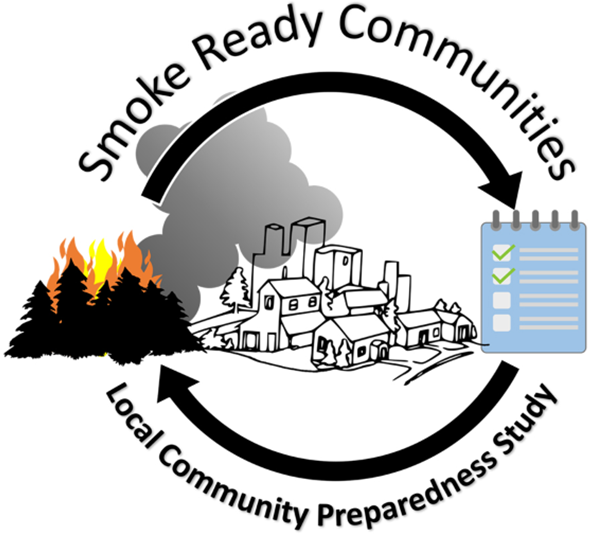Partners Collaborate in Smoke-Ready Communities Research to Enhance Local Readiness for Wildfires

Published August 16, 2022
As wildfire smoke continues to impact the health of many people in fire-prone areas in the United States this summer, community leaders want to know how best to prepare residents on ways to protect their health from smoke exposure.
EPA and the U.S. Forest Service are leading a unique multidisciplinary and interagency study that is expected to offer assistance with planning for smoke events from fires. The research project involves community partners in a collaborative process to create community smoke response plans that can be implemented during smoky conditions. The partners are the city and county of Butte and Silver Bow in Montana, and Garfield County in Colorado, two counties increasingly impacted by wildfires.
Relationship building by members in the community has been a key to the success of the project, says Mary Clare Hano, lead investigator. Her team facilitated regular meetings and educational workshops on smoke health risks and communications strategies to support the partners as they developed their smoke-ready plans. The solutions-driven study incorporates the principals of social science that examine human behavior and the relationships among individuals within society.
“I’ve learned a lot from this project about the importance of engaging with local partners in research to address and support their challenges with implementing a smoke ready plan,” says Hano. “Another insight I have learned is about being proactive in creating a team of experts from wildland fire science, air quality, public health, and science communication to provide information needed by the partners.”
As a result of the research collaboration, one partner has developed a plan and the other is finalizing one that can be used to protect public health during this year’s wildfire season and beyond.
“Our main goal is to educate the people in the community about the health risks from smoke and actions the public can take,” explains Jackie Thompson, registered sanitarian at the Butte-Silver Bow Environmental Health Department. “A lot of people don’t know that small particles in the air can go into the lungs and cause health problems.” Another goal for the county is to expand air quality monitoring capability with air sensors to supplement regulatory-grade monitors.
Butte-Silver Bow has experienced more unhealthy air quality conditions related to wildfire smoke in recent years. The surrounding mountains trap the smoke, which can stay for days or weeks and cause health problems for residents. The majority of the county’s residents are at greater risk from exposure to smoke because of their health condition, age, or socioeconomic factors. Many homes don’t have air conditioning that can be used to help clean indoor air of smoke during fires.
“We knew that wildfire smoke was going to be more of an environmental health issue here in the future, and it was not going to subside, so we wanted to be more proactive,” says John Rolich, director of the Butte-Silver Bow Environmental Health Department.
The health department established a multidisciplinary team of county members to develop a comprehensive smoke-ready plan. The plan has been approved by county officials and is being implemented with widespread acceptance, according to the health department officials. Other counties in Montana have contacted the health department with interest in replicating the smoke-ready plan, they said.
The plan identifies target audiences and key messages, along with communications strategies and educational materials to reach and inform the public. It also includes steps to enhance air quality monitoring capabilities by adding air sensors in the Butte valley to enable residents to get real-time air quality conditions in their area.
In addition, an anonymous donor has provided funds to start an air cleaner loan program for those in need, and the health department plans to establish clean air spaces and shelters in the county for residents to use when needed. Eventually health officials want to add smoke-related health statistics to their annual county health assessments.
Garfield County has been increasingly impacted by wildfires. Ted White, environmental health specialist in the Garfield County Public Health Department, says the research project came at a good time since, as an air quality manager for the department, he saw the need for a smoke-ready plan. “One of my goals of this whole plan is to tie it all together so that people are not just thinking only of the wildfire (flame) danger, but that the smoke poses a health risk as well” he says.
The wide variety of experts from the community on the planning team has been important to developing a plan, White says: “It’s been really valuable to have all the different voices on the team because we come at it from a different way.”
To that end, the research project is a study on collaborative processes and risk communications for smoke events during fires. Researchers are assessing the success of community-wide engagement to influencing public health readiness and determining factors that are most influential to public health protection.
The researchers expect to publish results that can be used by other health professionals, emergency response organizations, air quality managers and others to assist communities with developing their own smoke-ready plans.
Related Links:
Smoke-Ready Communities Research Project
